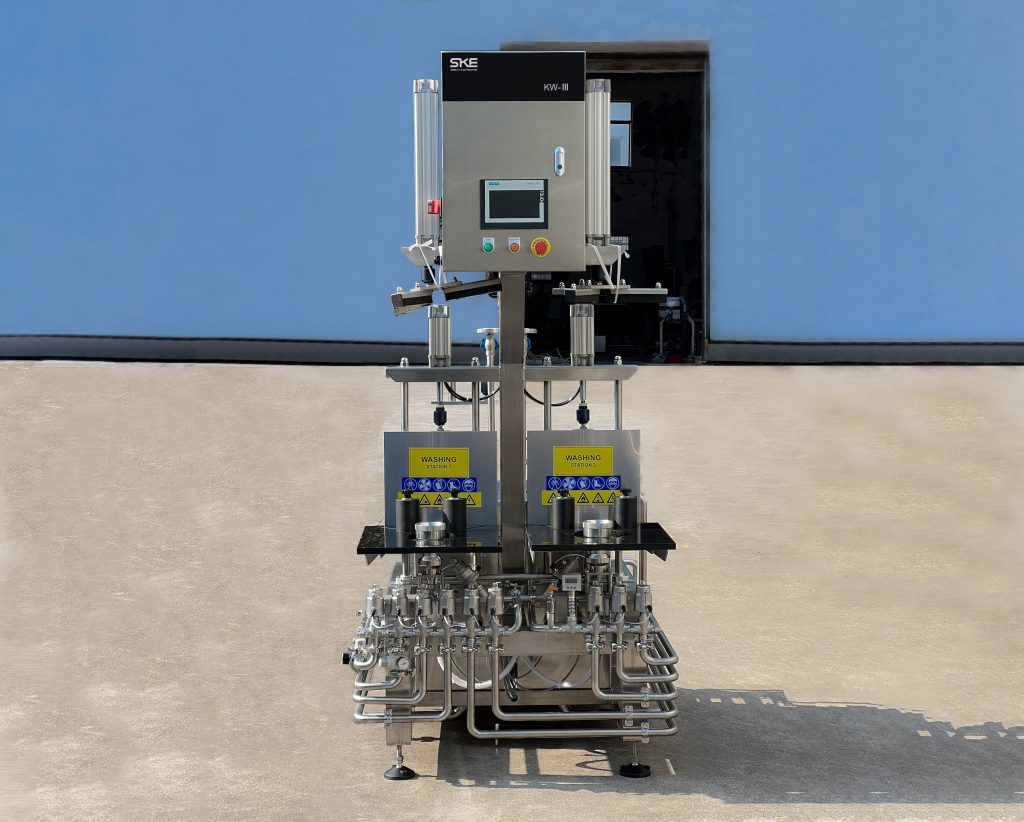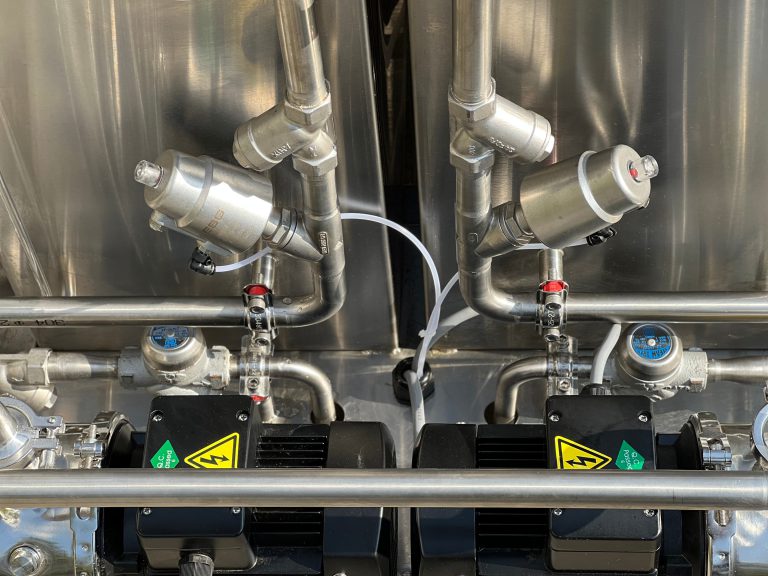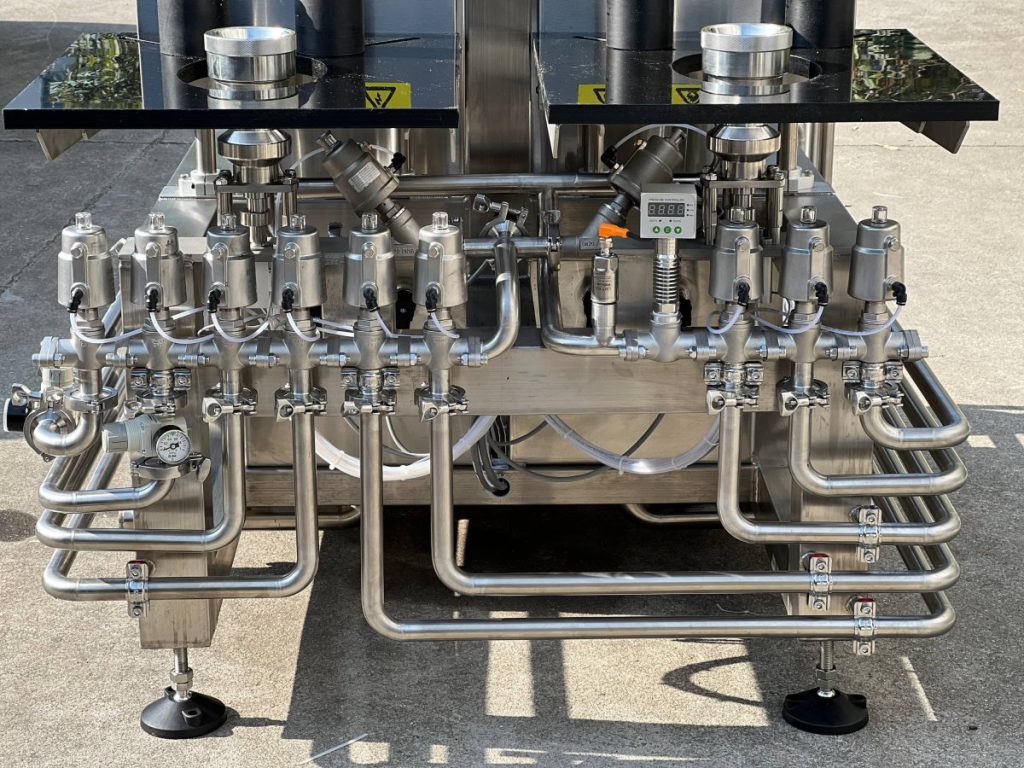مقدمة

In the highly competitive brewing industry, efficiency and productivity are essential for both survival and success. One of the most impactful investments a brewery can make is in keg filling equipment. This type of machinery not only enhances the filling process but also contributes to overall operational efficiency and productivity. In this article, we will explore various types of keg filling equipment, their benefits, and how they can transform your brewery’s output. Additionally, we will provide insights into choosing the right equipment and maintaining it for long-term benefits.
فهم Keg Filling Equipment
What is Keg Filling Equipment?
Keg filling equipment encompasses a variety of specialized machinery and tools designed specifically to fill kegs with beer efficiently and consistently. This equipment can range from basic manual systems to sophisticated fully automated lines, each tailored to meet the specific needs of breweries based on size, production volume, and type of beer. By understanding what keg filling equipment entails, brewery owners can better appreciate its importance in the brewing process.
Types of Keg Filling Equipment
When it comes to selecting keg filling equipment, it’s crucial to understand the different types available:
| يكتب | وصف | مثالي لاجل |
|---|---|---|
| Manual Filling | Simple, labor-intensive systems for small batches | مصانع الجعة الصغيرة |
| Semi-Automatic | Combines manual operation with some automation | Small to medium breweries |
| Fully Automatic | High-capacity systems for continuous operation | Large-scale breweries |
Each type of keg filling equipment has unique advantages and limitations, making it important for breweries to align their choice with their specific operational needs and production goals.
Benefits of Investing in Keg Filling Equipment
كفاءة محسنة
The primary benefit of advanced keg filling equipment is its ability to enhance efficiency significantly. Modern systems are designed to fill kegs quickly and accurately, reducing the time required for each fill. This efficiency not only allows breweries to increase production volumes but also ensures that employees spend less time on repetitive tasks. For example, an automated filling system can fill multiple kegs simultaneously, drastically cutting down the time spent on this essential process.
Consistent Quality Control
Quality control is a cornerstone of the brewing industry, and keg filling equipment plays a pivotal role in maintaining consistency. Automated filling systems minimize the potential for human error, ensuring that each keg is filled according to strict specifications. This level of consistency is crucial for breweries aiming to maintain their reputation and adhere to quality standards. A consistent product not only fosters customer loyalty but also helps breweries stand out in a crowded market.
انخفاض تكاليف العمالة
Automation in keg filling can lead to significant reductions in labor costs. By utilizing advanced filling systems, breweries can operate with fewer staff members dedicated to the filling process. This shift allows existing employees to focus on other essential areas, such as quality control, packaging, or inventory management. Moreover, with fewer personnel involved in filling, the likelihood of workplace injuries decreases, further contributing to cost savings and operational efficiency.
Decreased Product Loss
One of the often-overlooked advantages of modern keg filling equipment is its ability to reduce product loss during the filling process. Many automated systems are designed with precision in mind, which helps minimize spillage and overfilling. This reduction in product loss is critical for improving profitability, as every ounce of beer counts in a competitive market. Additionally, by reducing waste, breweries can adopt more sustainable practices that resonate with environmentally conscious consumers.
اختيار الحق Keg Filling Equipment
عوامل في الاعتبار
Selecting the appropriate keg filling equipment involves evaluating several key factors that align with the brewery’s operational needs:
- حجم الإنتاج: Understanding the volume of beer produced weekly is essential in selecting a suitable filling system. High-volume breweries require equipment that can handle significant throughput without sacrificing quality or efficiency.
- ميزانية: Evaluating the investment against expected returns and efficiency gains is crucial. While some systems may have a higher upfront cost, the long-term savings in labor and increased production may justify the expense.
- نوع البيرة: Different beer styles may require specific filling techniques or equipment configurations. For instance, craft breweries producing unique or specialty beers might need more adaptable systems.
- Space Availability: The physical layout of the brewery is another critical consideration. Ensuring the chosen equipment fits within the brewery’s infrastructure while allowing for smooth workflows is vital for operational success.
تأثير Keg Filling Equipment on Brewery Productivity
سير العمل المبسط
Investing in keg filling equipment can significantly streamline the workflow within a brewery. By integrating advanced filling systems into existing operations, breweries often experience improvements in scheduling, reduced downtime, and faster turnaround times. For instance, with a fully automated system, a brewery can transition from brewing to packaging seamlessly, minimizing idle time and maximizing productivity.
Case Study: A Successful Brewery Transformation
To illustrate the impact of effective keg filling equipment, let’s consider a hypothetical case study:
Golden Grain Brewery faced challenges with their manual keg filling process, producing approximately 300 kegs daily. Frequent delays caused by labor shortages and equipment malfunctions hindered their growth potential. After conducting thorough research and selecting a semi-automatic keg filling system, Golden Grain Brewery was able to increase their daily output to 600 kegs. The investment not only improved consistency but also significantly reduced labor costs, allowing the brewery to redirect resources toward marketing and product development.
Maintenance and Upkeep of Keg Filling Equipment
Regular Maintenance Requirements
To ensure the longevity and efficiency of keg filling equipment, regular maintenance is essential. Establishing a routine maintenance schedule can help prevent costly downtime and equipment failure. Key maintenance tasks include:
- Daily Inspections: Check for any visible wear or malfunctions in the equipment.
- Weekly Cleanings: Maintain hygiene and prevent contamination by cleaning components that come into contact with beer.
- Monthly Technical Assessments: Inspect key mechanical parts for signs of wear and tear to ensure optimal performance.
- Annual Professional Servicing: Hiring professionals for a comprehensive check-up can prevent unexpected issues and extend the life of the equipment.
Common Issues and Solutions
| Common Issue | Potential Cause | حل |
|---|---|---|
| Inconsistent fills | Blocked nozzles | Regular cleaning schedule |
| Equipment downtime | Mechanical failure | Routine maintenance checks |
| High spillage rates | Incorrect pressure settings | Calibration and training |
By proactively addressing these common issues through regular maintenance and prompt action, breweries can significantly reduce downtime and maintain a smooth operation.
الاتجاهات المستقبلية في Keg Filling Equipment

Advancements in Technology
The future of keg filling equipment is poised for innovation, with advancements in technology leading to greater efficiency and effectiveness. Expect developments in areas such as IoT integration, which allows breweries to monitor equipment performance in real-time. This capability enables quicker responses to issues, ultimately improving productivity and reducing downtime.
Sustainability Considerations
With an increasing focus on sustainability in the brewing industry, future keg filling technologies are likely to incorporate eco-friendly materials and energy-efficient operations. Breweries that invest in sustainable keg filling solutions can not only reduce their carbon footprint but also appeal to a growing segment of environmentally conscious consumers.
خاتمة
In conclusion, investing in quality keg filling equipment is a vital step for breweries looking to enhance their productivity and operational efficiency. The benefits extend beyond just filling speed and accuracy; they encompass reduced labor costs, improved product consistency, and lower product loss. By carefully considering the types of equipment available and assessing key factors during the selection process, breweries can make informed decisions that lead to long-term success and growth in a competitive market.
التعليمات
س: كيف أختار الحق keg filling equipment لمصنع الجعة الخاص بي؟
A:Choosing the right keg filling equipment involves evaluating your production volume, budget, and space availability. Analyzing these factors will help you find the best match for your operational needs.
Q:What maintenance is required for keg filling equipment?
A:Regular maintenance includes daily inspections, weekly cleanings, monthly technical assessments, and annual professional servicing. These tasks ensure optimal performance and longevity of the equipment.
س: يمكن keg filling equipment improve product quality?
A:Yes, automated systems reduce human error, ensuring that every keg is filled to the same specifications. This consistency is crucial for maintaining high-quality standards in brewing.
Q:What are the cost implications of investing in keg filling equipment?
A:While the initial costs can be substantial, the long-term savings in labor, reduced product loss, and increased efficiency typically provide a strong return on investment.
Q:Are there specific challenges associated with keg filling?
A:Common challenges include mechanical failures, inconsistent fills, and high spillage rates. These issues can often be addressed through regular maintenance and adequate training for staff.
Q:How can breweries ensure sustainability with keg filling equipment?
A:Investing in energy-efficient technologies and eco-friendly materials can help breweries reduce their carbon footprint while enhancing their sustainability efforts.
Q:What is the future of keg filling equipment?
A:Expect to see advancements in automation, IoT integration, and sustainability features that will further revolutionize keg filling technology in the brewing industry.

